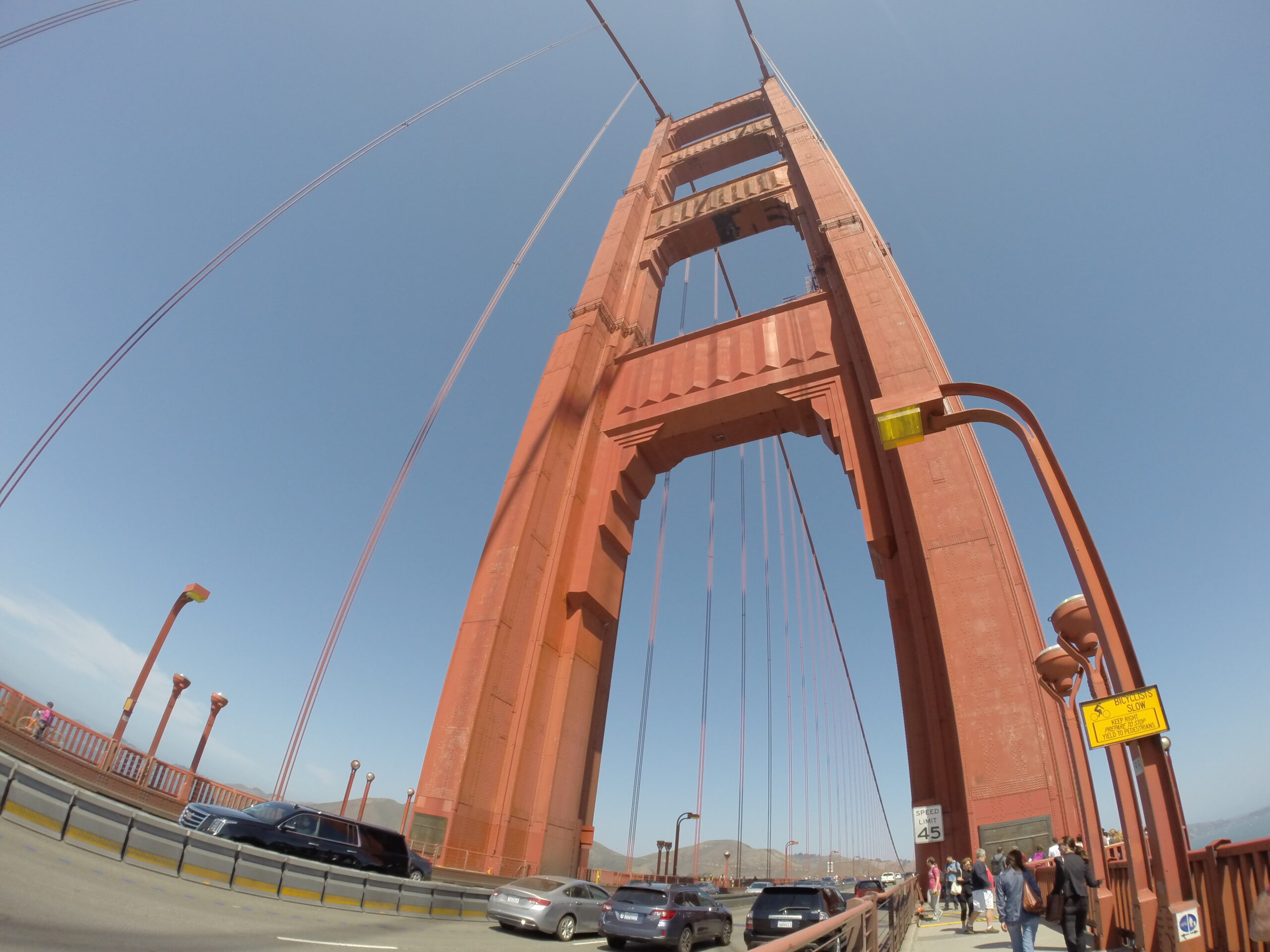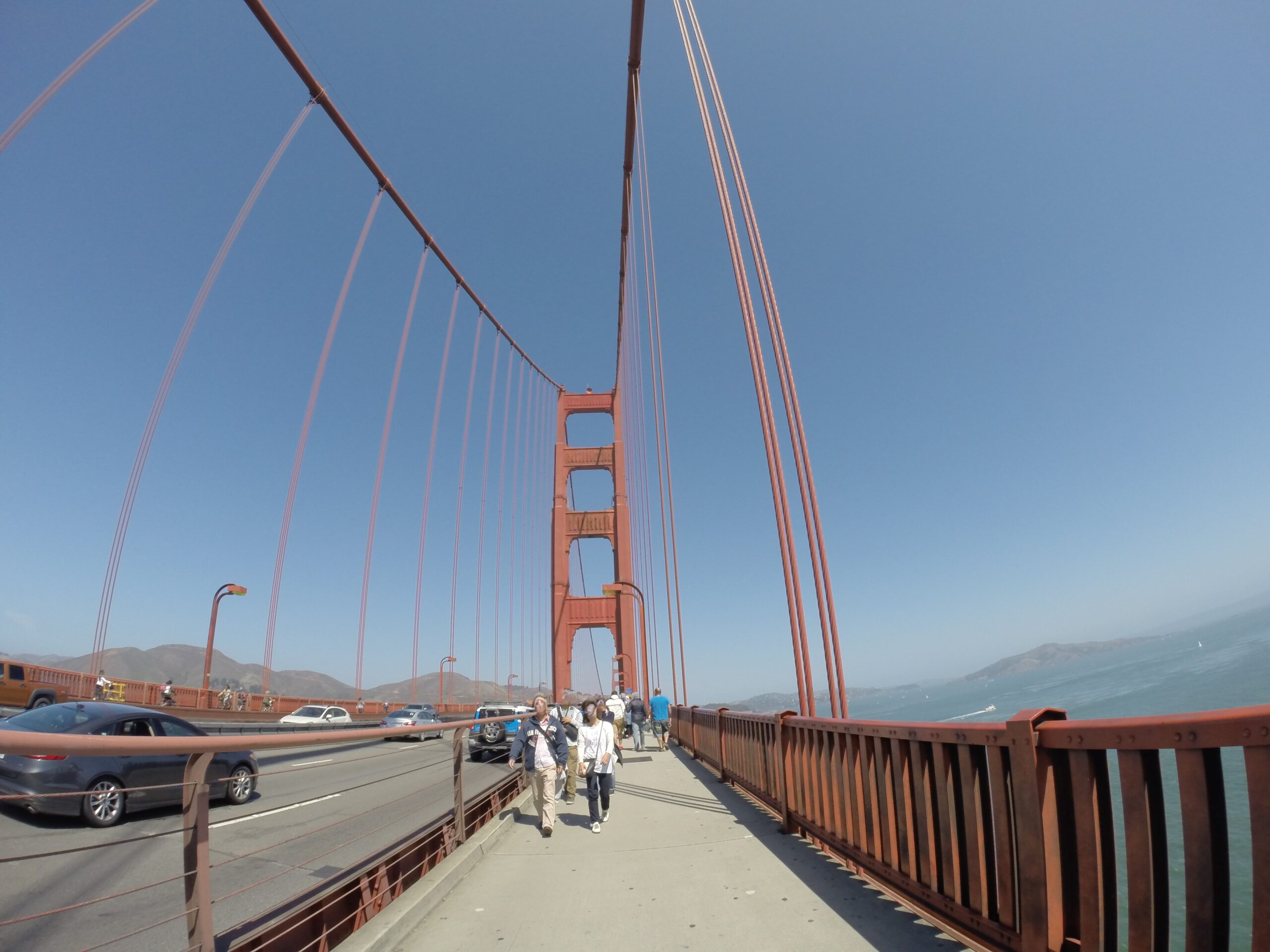The magnificent orange Golden Gate Bridge in San Francisco adorns the city not only in terms of aesthetics but also in terms of history and engineering. In this article, you will discover when the bridge was built, the relationship between the private club Half-Way-to-Hell-Club and the bridge, why it is orange, its impressive technical features, and the bridge’s connection to the fog in the area. If you are ready, let’s explore this iconic structure together.

When Was the Golden Gate Bridge Built?
The idea of building a bridge at this point in San Francisco was first brought up in 1872 by Charles Crocker, a railroad executive and entrepreneur. Due to limited technical knowledge, high construction costs, differing public opinions, and complex design processes, the idea of building a suspension bridge did not gain much attention at the time.
Over time, with the increase in trade and human traffic in the region, this issue came to the agenda again in the 1910s. In those years, everyone thought that the cost of building such a bridge would be 100 million dollars. During these discussions, an engineer named Joseph Baermann Strauss claimed that the cost would not be that high and that the entire cost would be between 25 and 30 million dollars if a suspension bridge was built.
He shared the bridge designs with the authorities and met with different segments of society for several years to convince them of the bridge. With the effect of increasing ferry traffic (approximately 123,000 trips annually), these lobbying efforts yielded results. Construction of the bridge began on January 5, 1933.
Construction Process
The construction was not easy at all. The strong current of the bay, the constant fog and wind made the construction work very difficult. Unfortunately, 11 workers lost their lives during this process. The construction of the bridge took more than 4 years and was opened on May 27, 1937. The construction cost approximately 35 million dollars. This amount is approximately 1.2 billion dollars in today’s money.
Special nets were set up in the construction area to prevent possible accidents during construction. These nets also saved the lives of some workers. The workers who survived thanks to these nets later founded a special club called Half-Way-to-Hell-Club. The last surviving member of the club, Alfred (Al) Zampa, passed away in 2000 at the age of 95.

Technical Specifications of the Golden Gate Bridge
The total length of the bridge is 2,737 meters and its width is 90 meters. The bridge’s piers rise 227 meters above water and 152 meters above the road. The total length of the two main cables carrying the bridge is 2,332 meters each and these cables contain a total of 129,000 km of cables. Construction of the bridge used approximately 83,000 tons of steel. The total weight of the bridge is 894,500 tons.

Why is the Golden Gate Bridge Orange?
Although the term red is used in many places regarding the color of the Golden Gate Bridge, the bridge’s color is actually orange, not red, in official documents. The original name of this color is “The Golden Gate Bridge International Orange“.
The bridge’s consultant architect Irving F. Morrow is behind the idea of the bridge being this color. He is always impressed by how the bridge’s color harmonizes with the landscape and contrasts with the ocean and sky. When he researches alternative colors, he sees that this orange color is the color that most clearly reveals the bridge’s beauty. In addition, this color makes it possible to see the bridge in dense fog.
The Art Deco Style of the Golden Gate Bridge
The consulting architect Morrow was also behind the “art deco” style of the bridge. This type of design had not been on the agenda before him. Morrow knew that the bridge would have an even more impressive appearance with art deco details. For this reason, he simplified the bridge’s railings, angled the lighting, and added protrusions to the iron bars to capture different reflections of light. Thanks to these details, the bridge became a magnificent example of the art deco style.

Why Is There Always Fog on the Golden Gate Bridge?
This fog is actually not related to the bridge but to the San Francisco region. The moist air coming from the Pacific Ocean condenses as it passes over the cold water current that runs parallel to the California coast, thus creating a permanent fog in the region.
The fog occasionally reduces visibility and poses a serious risk to ships underway. For this reason, there are three fog horns in the middle of the bridge and two on the tower pier to the south. You will hear these horns most intensely during these months, especially in the summer months, due to the high amount of fog.

Pedestrian and Bicycle Traffic on the Bridge
It is a great opportunity for a bridge of this size and length to be open to pedestrian and bicycle traffic. Being able to walk from one end of the bay to the other and take in the magnificent view of San Francisco Bay from the Golden Gate Bridge is an unforgettable experience.

Observation Decks
In addition to walking on the bridge, be sure to visit the observation decks around the bridge. Battery Spencer, Golden Gate View Point and Golden Gate Observation Deck in the north; Battery Cranston, Battery Boutelle, Golden Gate Overlook and Golden Gate Bridge Vista Point South viewing points in the south give you the chance to see the bridge and the bay from different angles.

The Golden Gate Bridge was one of the bridges I enjoyed the most with its color, view and the experience of walking on it. Seeing this iconic structure was an unforgettable experience. If you find yourself in the western United States, make sure to visit the Golden Gate Bridge. Before visiting the bridge, be sure to check https://www.goldengate.org to see if there are any special warnings about the bridge.